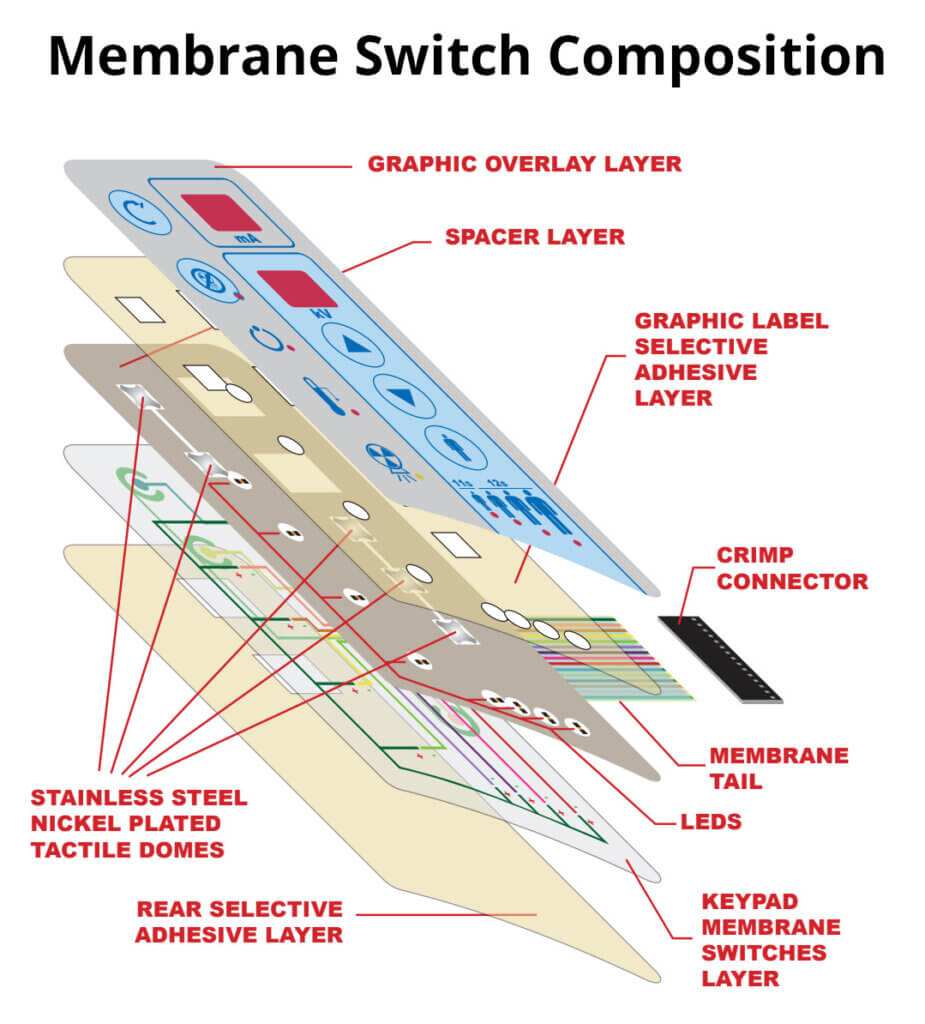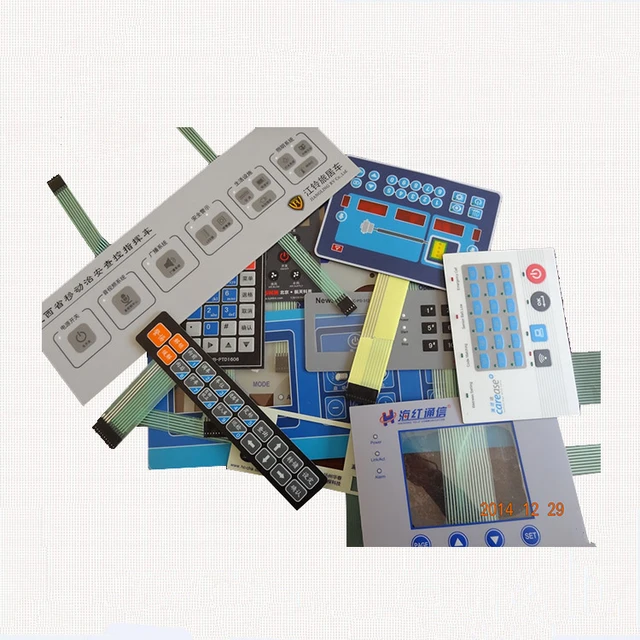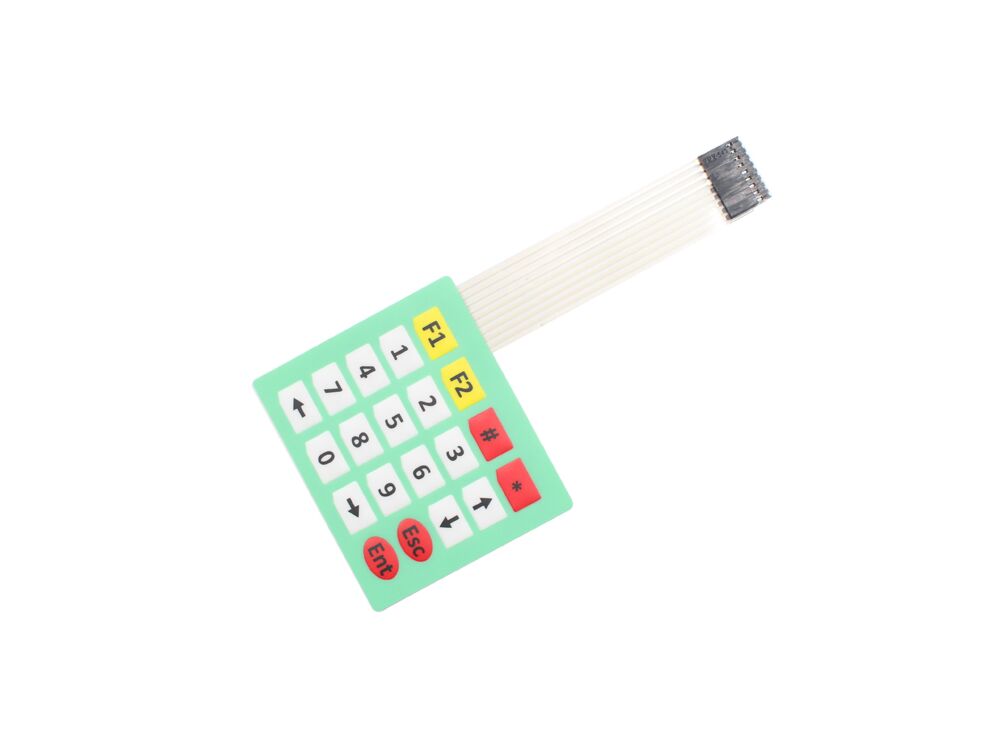How Membrane Switch Technology is Revolutionizing User Interfaces
How Membrane Switch Technology is Revolutionizing User Interfaces
Blog Article
Understanding Membrane Layer Changes: The Trick to Sturdy and Dependable Controls

What Are Membrane Layer Buttons?
Membrane layer buttons are an innovative solution in the world of interface modern technology, integrating performance and layout flawlessly. These gadgets serve as an interface between users and electronic systems, incorporating several parts into a compact style. Usually built from flexible, slim layers of products, membrane layer buttons are made to react to touch, making it possible for customers to communicate with equipment and digital gadgets properly.
The key elements of a membrane switch consist of a published circuit layer, visuals overlay, and a spacer layer that protects against unexpected activation. The graphic overlay can be tailored to show brand identity or individual choices, improving aesthetics while ensuring functionality. Membrane layer buttons are typically made use of in different applications, including medical tools, consumer electronics, and commercial devices, owing to their toughness and resistance to ecological elements such as dampness and dirt.
One of the vital benefits of membrane layer buttons is their capability to stand up to damage, making them perfect for high-traffic atmospheres. Additionally, they are lightweight and call for minimal space, enabling innovative layouts in product growth. Overall, membrane layer switches over represent a effective and sensible option for contemporary digital interfaces, weding technology with user-centric design principles.
How Membrane Switches Work
The operation of membrane layer switches over hinges on a basic yet reliable system that translates individual input into electronic signals. These switches include numerous layers, generally consisting of a visuals overlay, a spacer layer, and a circuit layer. When an individual presses the button, the leading layer deforms, permitting a conductive aspect in the circuit layer to reach a matching conductive pad on the bottom of the visuals overlay. This get in touch with shuts the circuit and sends out a digital signal to the tool, showing that the button has actually been turned on.
The layout of membrane layer switches can vary, however they typically include domes or tactile aspects to offer feedback to the customer, enhancing the total experience - membrane switch. The materials made use of in membrane switches, such as polyester or polycarbonate, add to their resilience and resistance to ecological aspects, including dampness and dust. Moreover, the printed circuits are usually encapsulated, which secures them from damage in time.
Advantages of Membrane Buttons

Additionally, membrane switches are recognized for their toughness. Created from durable products, they are resistant to dirt, wetness, and physical wear, which considerably prolongs their lifespan contrasted to typical mechanical switches. This sturdiness makes them specifically ideal for high-traffic settings and applications requiring longevity.
An additional significant benefit is the convenience of cleansing and upkeep. The smooth surface area of membrane layer changes reduces dirt accumulation and is commonly impervious to spills, making them excellent for setups that call for constant sanitization.
Furthermore, membrane layer buttons offer a structured profile, bring about a thinner style that can be integrated right into different gadgets without adding mass. This attribute not just boosts the aesthetic charm but likewise contributes to a much more ergonomic product layout.
Applications of Membrane Layer Buttons
Easy to use and flexible, membrane switches discover applications throughout a wide variety of sectors, including clinical devices, customer electronics, and hop over to these guys industrial devices. In the medical area, these buttons are integral to tools such as analysis devices, client monitoring systems, and mixture pumps, where integrity and ease of cleansing are important. Their capacity to keep and hold up against harsh settings functionality makes them suitable for such applications.

In consumer electronics, membrane switches are made use of in items like microwaves, washing makers, and push-button controls - membrane switch. Their streamlined layout permits instinctive user interfaces, enhancing the overall user experience while offering sturdiness and resistance to tear and wear
Commercial devices likewise gains from membrane switches, particularly in control panels for machinery and automation systems. These buttons supply defense versus dust and moisture, guaranteeing constant performance in difficult environments. Their personalized attributes permit suppliers to customize them to particular operational requirements, enhancing performance and functionality.
Choosing the Right Membrane Layer Switch Over
When choosing a membrane button, it is necessary to think about various variables that influence performance and viability for certain applications. The key factors to consider consist of environmental problems, responsive responses, resilience, and design specifications.
First, evaluate the operating environment; switches exposed to dampness, chemicals, or severe temperature levels call for certain materials to ensure durability and performance. Next off, evaluate navigate to these guys the requirement for responsive responses. Depending upon individual communication, some applications may take advantage of a responsive feedback to verify activation, while others might choose a non-tactile style for visual reasons.
Toughness is an additional important element; membrane layer switches must be designed to endure constant use, influences, and abrasion. Ensure the selected switch can withstand the anticipated lifecycle, particularly in high-usage scenarios.

Verdict
In conclusion, membrane switches over offer as essential elements in the style of resilient and reliable control systems across various sectors. The versatility of membrane changes allows for tailored remedies that satisfy particular operational demands, strengthening their value in modern technology.
Membrane layer changes stand for a crucial aspect of modern interface layout, blending functionality with strength in various applications.Membrane buttons are a sophisticated remedy in the realm of individual interface technology, integrating capability and design seamlessly. Typically constructed from flexible, slim layers of materials, membrane layer buttons are developed to respond to touch, allowing users to interact with equipment and digital devices effectively.
The style of membrane layer switches can differ, yet they often incorporate domes or responsive aspects to provide responses to the individual, enhancing the total experience.In final thought, membrane changes offer as essential components in the layout of dependable and durable control systems throughout different sectors.
Report this page